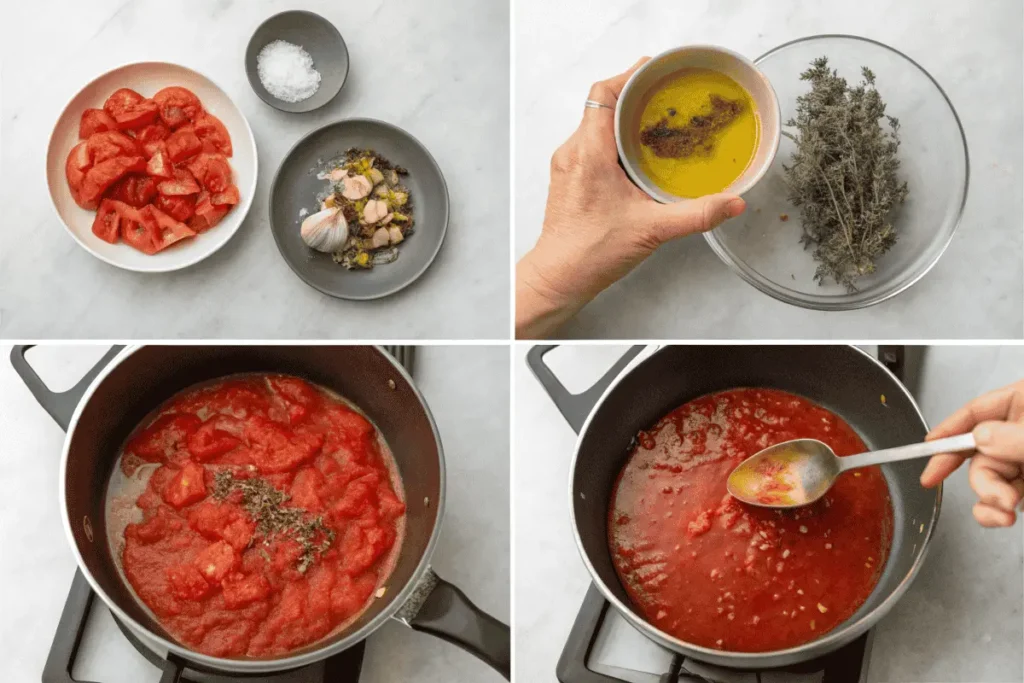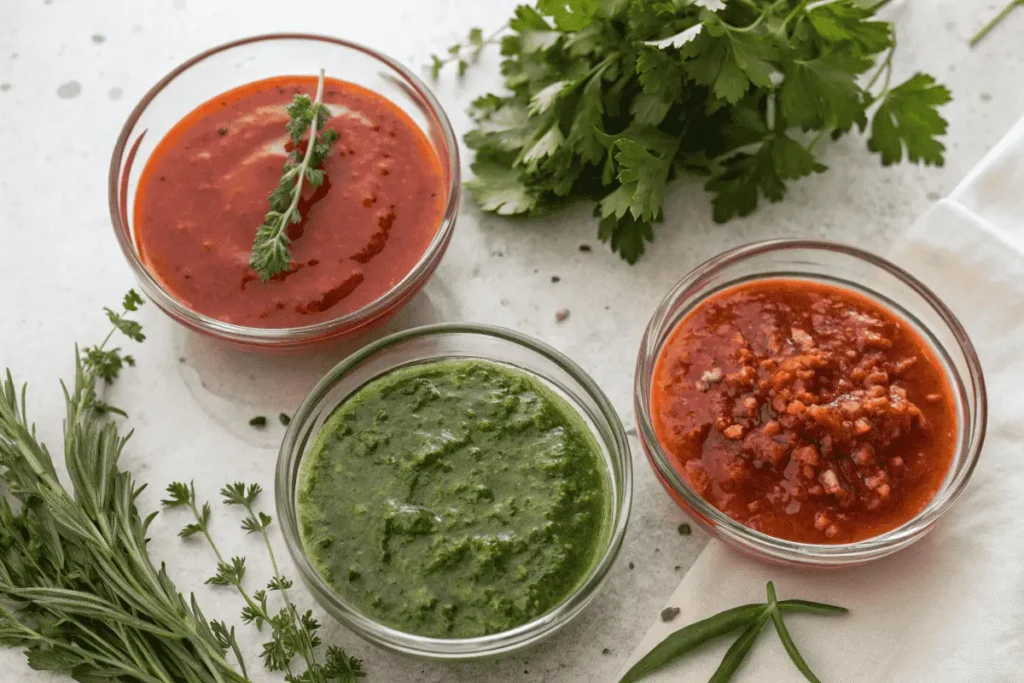Ever wondered why pizzeria sauce tastes so much better than your homemade version? The secret isn’t fancy ingredients or expensive equipment – it’s all about technique and timing. Today, we’re revealing six professional tips that will transform your pizza sauce from good to outstanding.
Have you ever taken a bite of pizza and had the sauce steal the show? That’s no accident. Italian chefs have perfected the art of pizza sauce over generations, and now you can too. These game-changing tips will help you create sauce worthy of a Neapolitan pizzeria.
Overview This classic pizza sauce recipe takes just 20 minutes to prepare and requires basic pantry ingredients. It’s beginner-friendly but incorporates professional techniques that yield restaurant-quality results. The recipe yields enough sauce for 4-6 large pizzas.
Difficulty Level: Easy
Preparation Time: 20 minutes
Cooking Time: 15-30 minutes (depending on method)
Table of Contents
Essential Ingredients
Base Ingredients: • 2 (28 oz) cans whole San Marzano tomatoes
• 4 fresh garlic cloves, minced
• 2 tablespoons extra virgin olive oil
• 1 tablespoon dried oregano
• 1 teaspoon sea salt
• 1/2 teaspoon black pepper
• Fresh basil leaves

Why These Ingredients Matter:
- San Marzano tomatoes: Less acidic, naturally sweeter
- Fresh garlic: Provides authentic flavor foundation
- Extra virgin olive oil: Adds richness and smooth texture
- Fresh basil: Brings bright, authentic Italian flavor
The 6 Professional Tips
- Choose the Right Tomatoes
- Always use whole peeled tomatoes
- San Marzano variety preferred
- Avoid pre-crushed or diced varieties Tip: If San Marzano isn’t available, look for plum tomatoes with minimal ingredients listed.
- Don’t Cook (Sometimes)
- Raw sauce preserves fresh flavors
- Perfect for high-temperature ovens
- Ideal for Neapolitan-style pizzas Tip: For lower temperature ovens, light cooking helps develop flavors.
- Hand-Crush Technique
- Crush tomatoes by hand
- Remove tough cores
- Creates ideal texture Tip: Wear disposable gloves to prevent staining.
- Season Gradually
- Add salt in stages
- Let flavors develop
- Taste frequently Tip: Salt draws out moisture, improving consistency.
- Use Fresh Aromatics
- Fresh garlic over powder
- Tear fresh basil
- Add herbs at the right time Tip: Add fresh herbs last to preserve flavor.
- Perfect the Consistency
- Slightly thicker than pasta sauce
- Should coat the back of a spoon
- Not watery or pasty Tip: Drain excess liquid from tomatoes if needed.
Step-by-Step Instructions
- Prepare Tomatoes:
- Drain tomatoes, reserving liquid
- Hand-crush into medium chunks
- Remove tough core pieces
- Build Flavor Base:
- Gently heat olive oil
- Sauté minced garlic until fragrant
- Add dried oregano
- Combine and Season:
- Add crushed tomatoes
- Season with salt and pepper
- Stir occasionally
- Perfect the Texture:
- Simmer if using (15 minutes max)
- Add reserved liquid if needed
- Cool completely before using
Storage and Make-Ahead Tips
• Refrigeration:
- Store in airtight container
- Keeps fresh 5-7 days
- Let reach room temperature before using
• Freezing:
- Freeze in portion-sized containers
- Maintains quality up to 3 months
- Thaw overnight in refrigerator

Recipe Variations
- Spicy Version:
- Add red pepper flakes
- Include fresh garlic
- Increase black pepper
- Herb-Forward:
- Add fresh oregano
- Include fresh thyme
- Double the basil
- Quick Version:
- Skip cooking
- Use hand-crushed tomatoes
- Season and serve
Health Benefits:
• Rich in lycopene
• High in vitamin C
• Good source of antioxidants
• Low in calories
FAQs
Q: Can I use canned crushed tomatoes?
A: Whole peeled tomatoes provide better texture and flavor control.
Q: Why isn’t my sauce thick enough?
A: Drain excess liquid from tomatoes and avoid over-processing.
Q: Can I make this in advance?
A: Yes, stores well in refrigerator or freezer.
Q: Should I always cook the sauce?
A: Depends on your pizza style – raw sauce works well for high-temperature cooking.
Conclusion: Creating authentic pizza sauce isn’t about complex ingredients or techniques – it’s about understanding these key professional tips and applying them consistently. Whether you’re making a quick weeknight dinner or hosting a pizza party, these methods will ensure your sauce becomes the star of every pizza.
Remember, great pizza sauce is about balance and quality ingredients. Start with these tips as your foundation, then adjust to your taste preferences. Don’t be afraid to experiment once you’ve mastered the basics.
Now that you know the secrets, it’s time to create your perfect pizza sauce. Your homemade pizzas will never be the same!
For more rich, comforting meals, consider exploring Smash Burger Tacos.

